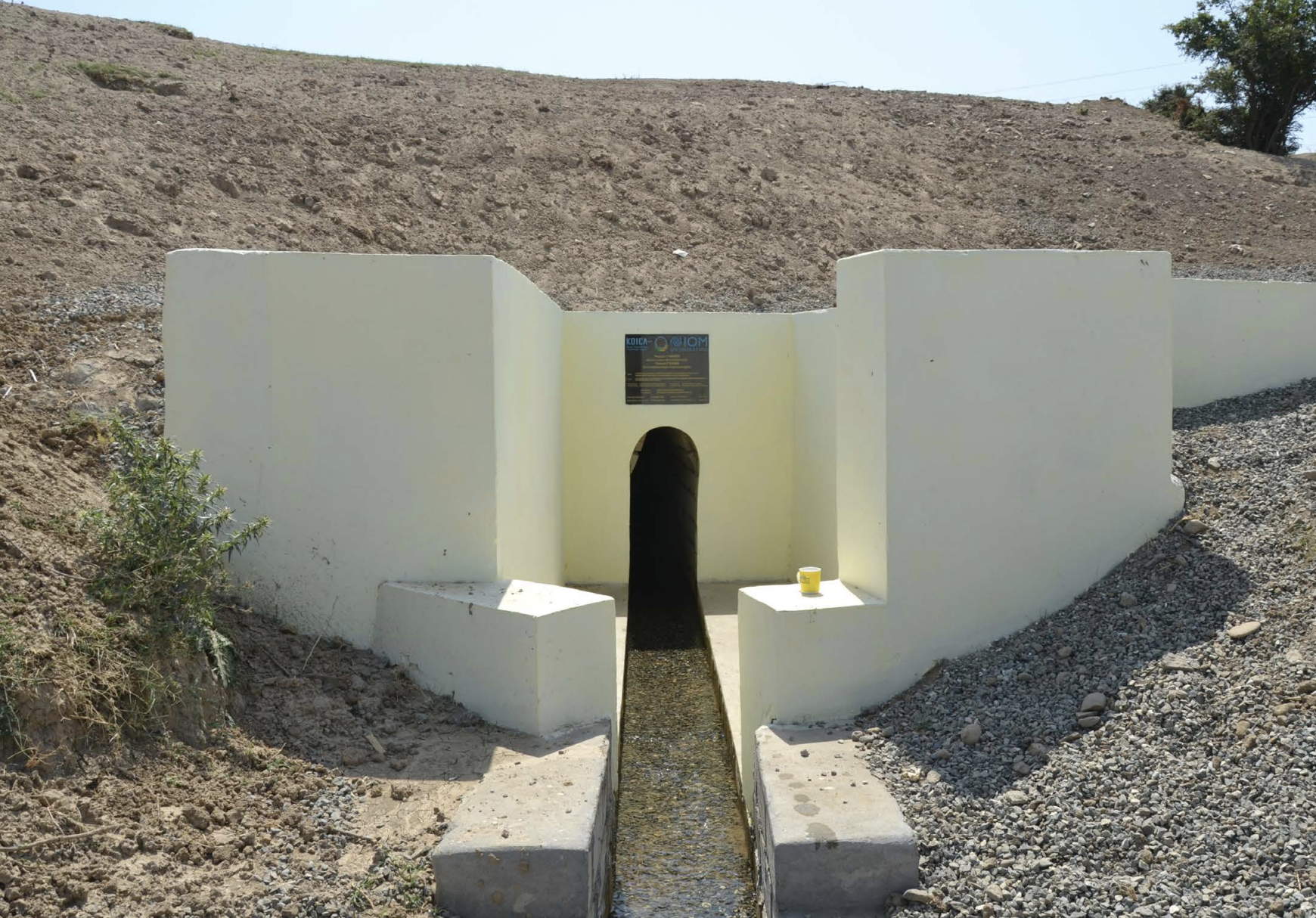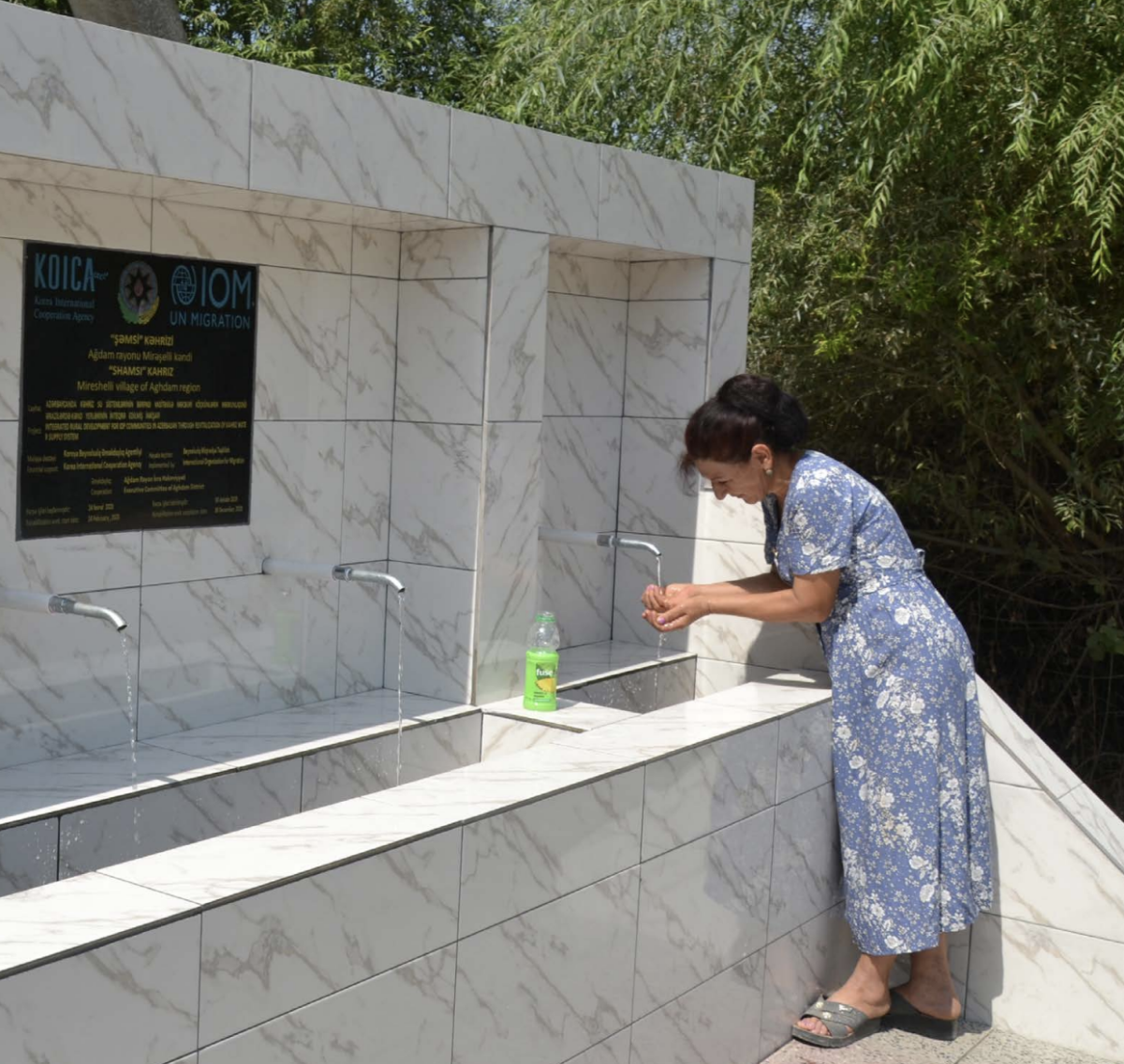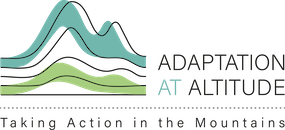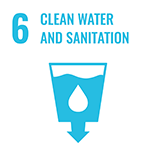Renewing the flow of water in Mireshelli, Azerbaijan

Summary
This project was part of the “Integrated Rural Development for internally displaced persons (IDP) Communities in Azerbaijan through Revitalization of the Kahriz Water Supply System”initiative (2018-2022) supported by the Korean International Cooperation Agency (KOICA) and the International Organization for Migration (IOM), and aimed to rehabilitate the Khariz system in the community of Mireshell, Azerbaijan. This system is sustainable and low-cost, using water from the mountains and the power of gravity to provide clean, accessible drinking water for local community members.
In Azerbaijan, the Caspian Sea significantly impacts rainfall patterns. On average, the mountainous areas of Azerbaijan receive more rainfall than lowlands and coastal areas. While the country relies mostly on surface water for water use, underground water has been extracted to meet the increasing demand for fresh water since the early 2000s. However, underground water aquifers are not renewable sources, and they may well experience shortages in the future, a risk exacerbated by climate change. Furthermore, the country being downstream of major waterways is exposed to water withdrawal activities of its neighbours. The Kura River, for example, runs through Georgia, Armenia and Turkey before entering the Caspian Sea in Azerbaijan.
By the 2050s, the average temperature is expected to increase between 1.3°C and 2.3°C compared to preindustrial levels, respectively according to the climate scenarios RCP2.6 and RCP8.5. Meanwhile, heavy rainfall events are likely to become more intense and less predictable. At present, the probability for the country experiencing a severe drought during a year is only 2 per cent. However, by the end of the century it is predicted to rise to 85 per cent in the high-emission scenario. These estimates reflect a transition to a chronically drought-affected environment in many regions of Azerbaijan and are likely to contribute to the expansion of arid ecosystems and desertification. The impacts of climate change will be felt most in the agriculture sector given that 80% of farming takes place in arid or semiarid areas and is highly dependent on irrigation. Having higher responsibility for domestic tasks, women and girls will be more negatively affected by increased water scarcity that is expected due to climate change.
The community of Mireshelli in Agdam district is nestled in the foothills of the Lesser Caucasus, where the local inhabitants rely on agriculture for their livelihoods. Agdam is among the districts in Azerbaijan hardest hit by water scarcity and poverty, which is also contributing to forced economic migration withing Azerbaijan or abroad. While the use of electric and fuelled-pumped wells for groundwater extraction was commonplace during the Soviet era, their running costs could not be afforded anymore after Azerbaijan gained independence, leaving Agdam communities suffering from a lack of drinking and irrigation water. Villagers meet their water needs with the well of poor quality and artesian water from remote distances. Given traditional gender roles, it is mostly women that take long walks every day to fetch water for drinking, cooking, washing and irrigating their fields.
Overview
- Location:
- Implementation sites:
-
- Single country
- Multiple locations
- Mountain region:
-
Lesser Caucasus
- Province:
-
- Districts of Agdam, Aghjabadi, Barda, Fuzuli, Ganja, Gazakh, Ghoranboy and Goygol
- Site locations:
-
Mireshelli village
- Solution scale:
- Ecosystem type(s):
- Solution type(s):
- Climate impact(s) addressed:
- Climate impact time-scale(s):
- Main benefit associated with the solution:
- Co-benefit(s) associated with the solution implementation:
- Other co-benefits(s) associated with the solution implementation:
-
- Health benefits
- Implementation timeline:
-
- 2018 - 2022
Solution details
Main beneficiaries & outcomes
- In January 2021 IOM Azerbaijan officially handed over the renovated Shamsi Kahriz to the community of Mireshelli village:
- With a discharge capacity of 27 litres per second, The Khariz system supplies drinking water to 214 households, and it supplies irrigation water to 75 families and 90 hectares of agricultural land.
- It particularly benefits women, who are traditionally responsible for collecting water, by making water resources more accessible thus reducing their workloads.
- The overall KOICA funded project has covered the districts of Agdam, Aghjabadi, Barda, Fuzuli, Ganja, Gazakh, Ghoranboy and Goygol in Azerbaijan. In total, the project aims to renovate 40 Khariz systems in the eight districts to secure water access for over 8,000 families.
Planning and implementation
The South Caucasus region has long been inhabited by populations who have developed and relied on traditional knowledge and skills to overcome water-related challenges. Over 3,000 years ago, the development of so-called Khariz, also named Qanat, was a way to transport water from water sources to distant locations in arid and semi-arid regions. In Azerbaijan, mountains have been a reliable water source for centuries and many regions adopted the Khariz system, especially for irrigation purposes. However, this traditional water system has since seen a decline in use and interest, leading to a lack of maintenance and malfunctioning.
Supported by the Korean International Cooperation Agency (KOICA) and the International Organization for Migration (IOM), a four-year project (2018-2022) – part of the “Integrated Rural Development for internally displaced persons (IDP) Communities in Azerbaijan through Revitalization of the Kahriz Water Supply System” initiative – was initiated to rehabilitate the Khariz system in the community of Mireshell. This Khariz system, locally called Shamsi, was rehabilitated to provide all households with improved access to drinking water and to reduce the outmigration of farmers and other community members due to a lack of economic prospects. The initiative also included the reintroduction of traditional masons, called Kankan, who bring the skill set to build and maintain these traditional infrastructures.
The solution is built on a community-driven approach to tackle cross-cutting issues, including a gender dimension to improve the living and working conditions of women who are traditionally responsible for collecting water. Water resources are now more reliable and can be fetched closer to people’s homes, which is reducing the workload for many women.

©Sustainable Caucasus
The principle of a Khariz system is simple: water from the mountains penetrates the ground and feeds the natural water table (aquifers), which is constantly renewed. A gallery is dug from the mountains to lower lands with a slight slope to make use of gravity. Additionally, ventilation shafts are built directly above the main gallery to improve flow and enable easy access for maintenance work. Since the system is powered only by gravity, it does not use any electricity or fossil fuels, and the water comes from a renewable source. It is thus a more sustainable and low-cost way for the communities to obtain water.
Finance
The project was funded by the Korean International Cooperation Agency (KOICA) and the International Organization for Migration (IOM), and had a total budget of USD 4,420,000, covering the areas of Aghdam, Aghjabadi, Barda, Fuzuli, Ganja, Gazakh, Ghoranboy, Goygol.
Innovation
Instead of relying on new technologies this solution takes inspiration from traditional water systems. This in itself may be considered innovating, since the system is powered only by gravity and thus is sustainable both financially and environmentally.
Long term project sustainability and maintenance
About 1,500 Khariz are thought to have existed until the twentieth century in Azerbaijan, but many Khariz systems are now out of order in mountain regions. Mireshell demonstrates that traditional knowledge and practice can be rehabilitated, offering a viable and sustainable way for mountain communities to secure water supply without energy use.
However, communities require technical support, funding, and assistance for cooperation with authorities. Critical to the success is the participatory approach, building on local knowledge and practices and fostering community ownership. Considering climate projections and including them into local development planning is another key aspect to enhance resilience to future climate conditions.
Capacities for design and implementation
Knowledge
Traditional knowledge and skills have long been used to overcome water related challenges in Azerbaijan. In this project it was no different, with the knowledge and skills that are unique to traditional masons being reintroduced to maintain the Khariz infrastructures. Furthermore, key to the project’s success was its participatory approach which allowed local knowledge and insights to inform practices and foster community ownership.
Socio-cultural
This project was implemented to tackle cross-cutting issues, in particular the burden placed on women who are responsible for collecting water. Thus, its community-driven approach focused on improving the living and working conditions of women by making water resources more accessible.
Outlook & Scalability
Potential for upscaling and replication
Khariz systems have also been adopted in other regions of the world. In 2014 these or similar water systems were estimated to be operational in 52 different countries, with about 30,000 galleries in use.
- Restoring ancient water management systems in the high Andes as an adaptation to climate change – Miraflores, Peru
- Seizing local opportunities in Armenia
- Use of traditional Ndivas in Tanzania
- As good as new: Rehabilitating irrigation systems in Gajimarda, Azerbaijan
- Restoring lost water resources in the Shirak region of Armenia





Comments
There is no content